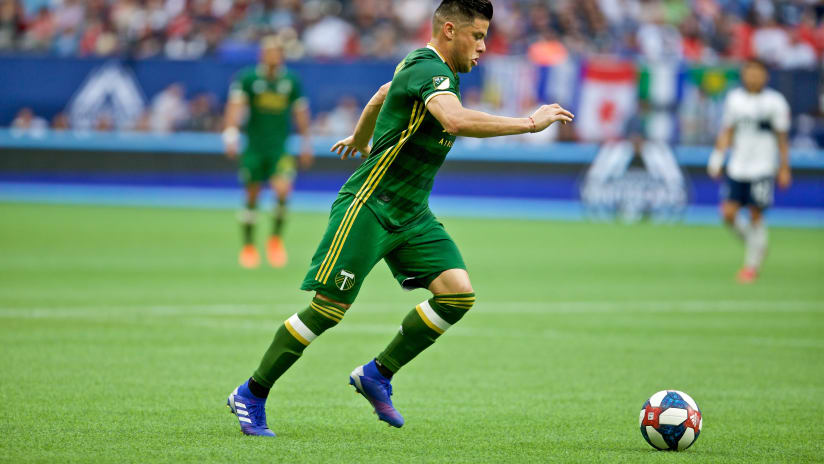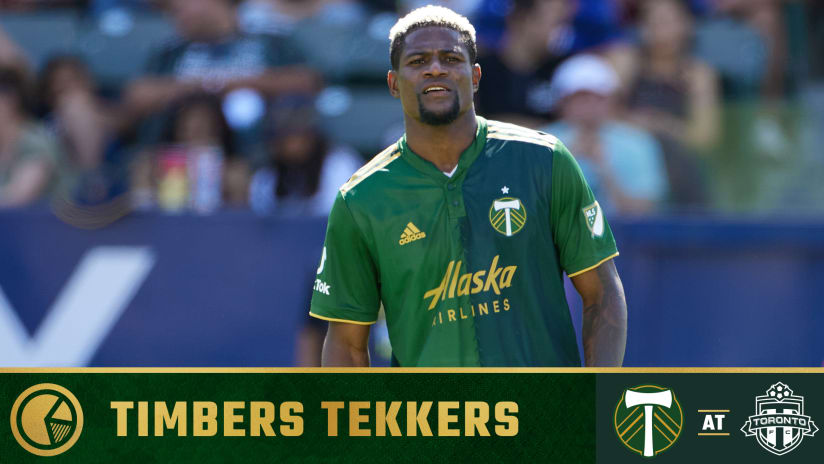It would be an exaggeration to say Jorge Moreira’s future has been looming over the Portland Timbers’ season, because in our 2020, the word looming has developed a more narrow use. We can’t throw words like those around as easily anymore; at least, not without a failing perspective. Looming is the path of the novel coronavirus. Looming is how our country deals with the realities of its racist past. The resolution of a soccer player’s loan just can’t be looming, right now.
But in terms of the Timbers’ 2020 hopes, Moreira’s future was important. And now, that future has arrived. On February 20, 2019, the Paraguayan international arrived on loan from Argentina’s River Plate. Now, with that loan expired, Moreira and his family are Buenos Aires-bound.
“Jorge Moreira has been a fantastic, dynamic player for the Timbers and was a tremendous addition to the club,” said Gavin Wilkinson, general manager and president of soccer for the Timbers. “The intention was to work with River Plate to extend his loan during these uncertain times and while River Plate is not open to this at the moment, it remains our sincere hope to see Jorge back with the Timbers in the future.”
This wasn’t supposed to happen. Then again, so little about our springs were supposed to happen. Yet things have changed, and dramatically so. As a result, the Timbers have lost their first choice right back. It’s less than ideal.
“I’m extremely thankful for Jorge’s contribution to our club,” said Giovanni Savarese, head coach of the Timbers. “He has been a great teammate and it has been a pleasure to coach him. He is a true professional who brought a lot of quality to his position.”
Before diving into the Timbers’ now, let’s take a moment to consider what’s lost. When he initially arrived, Moreira was billed as an all-action, line-to-line right back who would add a dimension to Portland’s presence in the attacking third. Ultimately, that billing nailed it, but the opening act of Moreira’s Timbers story was defined by something else. He had to adjust to a world when his team wasn’t River-level dominant. MLS doesn’t allow for that. In Argentina, he could attack, linger, and be safe amid his team’s edge in talent . He could just get forward.
Such was not the case up north. Moreira’s early games saw teams test his ability to defend, particularly when he had to defend crosses at a far post. It took Portland time to adjust. If they wanted Moreira to get forward, the Timbers were going to have to provide cover.
It took a little over a month, but come mid-spring, that adjustment happened. A game-sealing goal in Columbus on April 20, the Timbers’ first win of the season. Assists on June 22 and July 1. Another on July 27. A one-goal, one-assist game in an August win in Chicago. Once the team figured out how to use him, Moreira became an indispensable part of Portland’s attacking shape, with his positioning on this, Marvin Loría’s first MLS goal, showing the range he brought to Portland’s right-back position:
In how he was used, Moreira may have been the club’s first truly modern fullback. Over the last two decades, the position has evolved, moving from the defense-first prototype like Gary Neville to attack-focused talents like Dani Alves. More than any player the Timbers have had before, Moreira was in Alves’ mold. His stat line may have only read two goals, four assists, but in his ability to get forward early and often, he changed how Portland went forward.
He may not have been everybody’s idea of an ideal fullback, and in the highlights of him racing back to cover Steve Clark’s post, we saw hints of both talent and woe. But in the impact he had on the team, no other fullback compares. He is the best fullback of the team’s MLS era, if not all time, albeit for only a 28-game window.
With Moreira gone, well, there’s no need to sugar coat this. Team started its 2020 season believing a deal with River Plate would be worked out. Now, the Timbers have to adjust, and while Chris Duvall has shown he’s capable of doing a good job, there is a reason why Moreira was so valuable. When it comes to right back, he was the name at the top of the depth chart.
Now Portland needs to find out more about Duvall. They need evidence that augments the two games he played in March. They need to see what the team is like with a more extended run, and if Duvall shows he can hold down the position for the rest of the season – if Portland successfully adapts back to a world without a presence like Moreira’s – the sense of “immediately” around Moreira’s departure can become “eventually,” when it comes to a replacement.
But perhaps that replacement is already in the squad? Until we see more from Pablo Bonilla, it’s impossible to tell. The fact the young Venezuelan has been moved to a first-team deal hints at how the organization views him, but across Major League Soccer and throughout the history of sports, we’ve learned: Until we see it on the field, it’s best to reserve judgment. Off the field or on, through lifestyle or style of play, many obstacles have tripped up prospects’ moves forward. Until you have a proven player, there’s almost no proof.
Instead of proof, we have questions, for now. Can Duvall solidify his place as the team’s starter? Will Bonilla prove as valuable as Portland hopes? Perhaps there are other options, too, like Bill Tuiloma earning minutes at the position?
Ultimately, though, aren’t the Timbers destined to pursue another right back? Perhaps more pointedly, now that we’ve seen what a player of his type can do, how does Portland land another player like Jorge Moreira?












